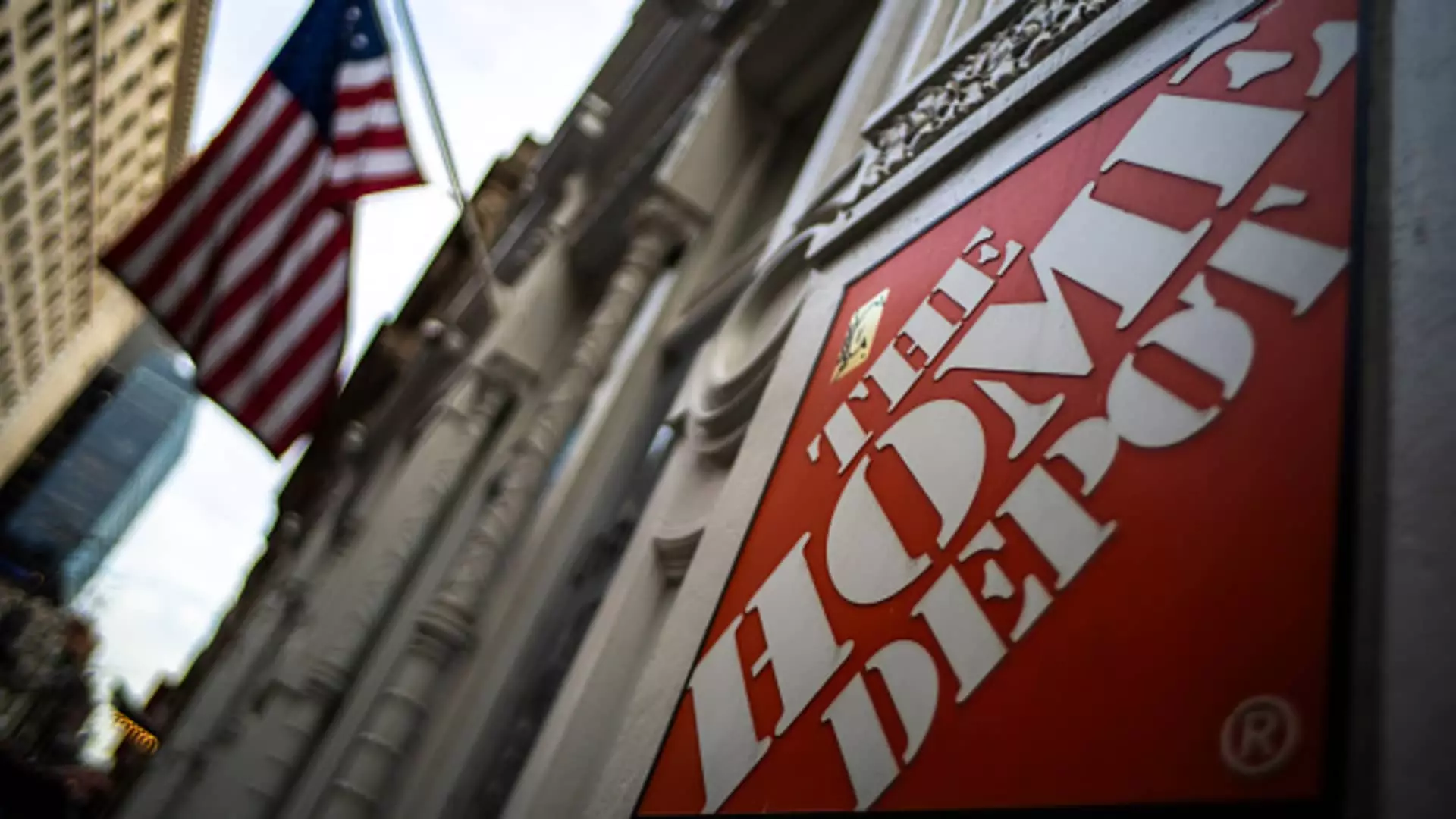Home Depot has long been a pillar of the retail home improvement sector, but recent developments cast doubt on its supposed resilience. As the company gears up to report its quarterly earnings, the looming shadows of economic slowdown, rising tariffs, and shifting consumer behaviors threaten its stability. Despite optimistic projections—$4.71 earnings per share and $45.36 billion in revenue—these figures risk glossing over the deeper systemic issues that challenge future growth. Home Depot’s strategic pivot to focus on professional contractors and suppliers is a pragmatic response, but it might also be a sign of a declining core market instead of an adaptive evolution. No matter how appealing the diversification appears, the fundamental question remains: can a retailer that once thrived on DIY homeowners reinvent itself fast enough to survive an uncertain economic climate?
Economic Headwinds and the Erosion of the DIY Dream
For several years now, Home Depot leaders have been signaling that the traditional backbone—Americans eager to invest in home improvements—has been faltering. Elevated interest rates, driven by inflation control measures and monetary tightening, have placed a chokehold on big-ticket projects. Large renovations and new home purchases, historically key drivers of sales, are now sidelined as consumers grapple with affordability and cautious spending. CEO Ted Decker’s comments about a shift toward smaller projects like painting and yard work reveal an economy that is more frugal, yet also more uncertain. This trend reveals that even an industry leader like Home Depot is struggling to sustain the growth it once enjoyed, relying increasingly on a segment of consumers who are more cautious and less ambitious.
The Strategic Shift Toward Professional Markets
In response to these headwinds, Home Depot is attempting to pivot its business model from a primarily DIY-focused retailer to a supplier for professional contractors and landscapers. Acquisitions like SRS Distribution and GMS suggest an earnest attempt at building a resilient, B2B-oriented backbone. While such moves diversify revenue streams and hedge against declining DIY sales, they also expose a reliance on the health of the construction and professional landscape sectors, both of which are vulnerable to economic downturns and policy uncertainties.
It remains to be seen whether this strategic shift will be enough to offset declines in consumer-driven sales. There is a certain irony in these moves: a company that built its success on eager homeowners now hedging on the fortunes of professional tradespeople. It echoes a larger truth in American retail—adaptation is essential, but it often feels more like damage control than innovation. If Home Depot’s core demographic continues to pull back, even a robust professional sector may not be sufficient to propel the company forward.
The Cost of Tariffs and Trade Uncertainty
Tariffs have emerged as a critical obstacle in Home Depot’s path, injecting volatility into the supply chain and pricing strategies. While the company publicly promises to maintain current prices, this stance is precarious, especially given how other retailers like Walmart have warned of absorbing tariff costs and passing them directly to consumers. Home Depot’s refusal to hike prices could be a calculated gamble to retain market share but also risks squeezing profit margins in a volatile environment.
Furthermore, the shifting landscape of international trade, with fluctuating tariffs and geopolitical negotiations—such as delays in tariff increases on Chinese imports—adds a layer of unpredictability. Home Depot’s efforts to diversify supply sources point to a pragmatic approach, but diversification cannot eliminate the fundamental risks posed by ongoing tariff uncertainties. As trade policies evolve, the company’s growth prospects may be increasingly constrained, demanding more than tactical adjustments—they require a fundamental reassessment of strategic resilience.
The Future Is Uncertain, and Confidence Is Fragile
Home Depot’s latest outlook, projecting modest growth of 2.8% for the year, appears optimistic given the turbulence surrounding tariffs and the broader economy. Even more concerning is the reliance on a narrow band of sectors—home professionals and small projects—that may not sustain long-term growth if economic conditions deteriorate further.
There’s an underlying sense that Home Depot, like many retail giants, is caught in a liminal space: it’s trying to adapt to an environment reshaped by external shocks and internal shifts but lacks the clarity or boldness necessary to lead in uncertain times. Its reluctance to elevate prices in response to rising costs could undermine its margins, and its expansive acquisitions, while strategic, could stretch financial resources thin if revenues falter. The company’s future hinges on whether it can navigate these turbulent waters—balancing short-term survival with long-term innovation—and remain relevant without alienating its existing customer base.

